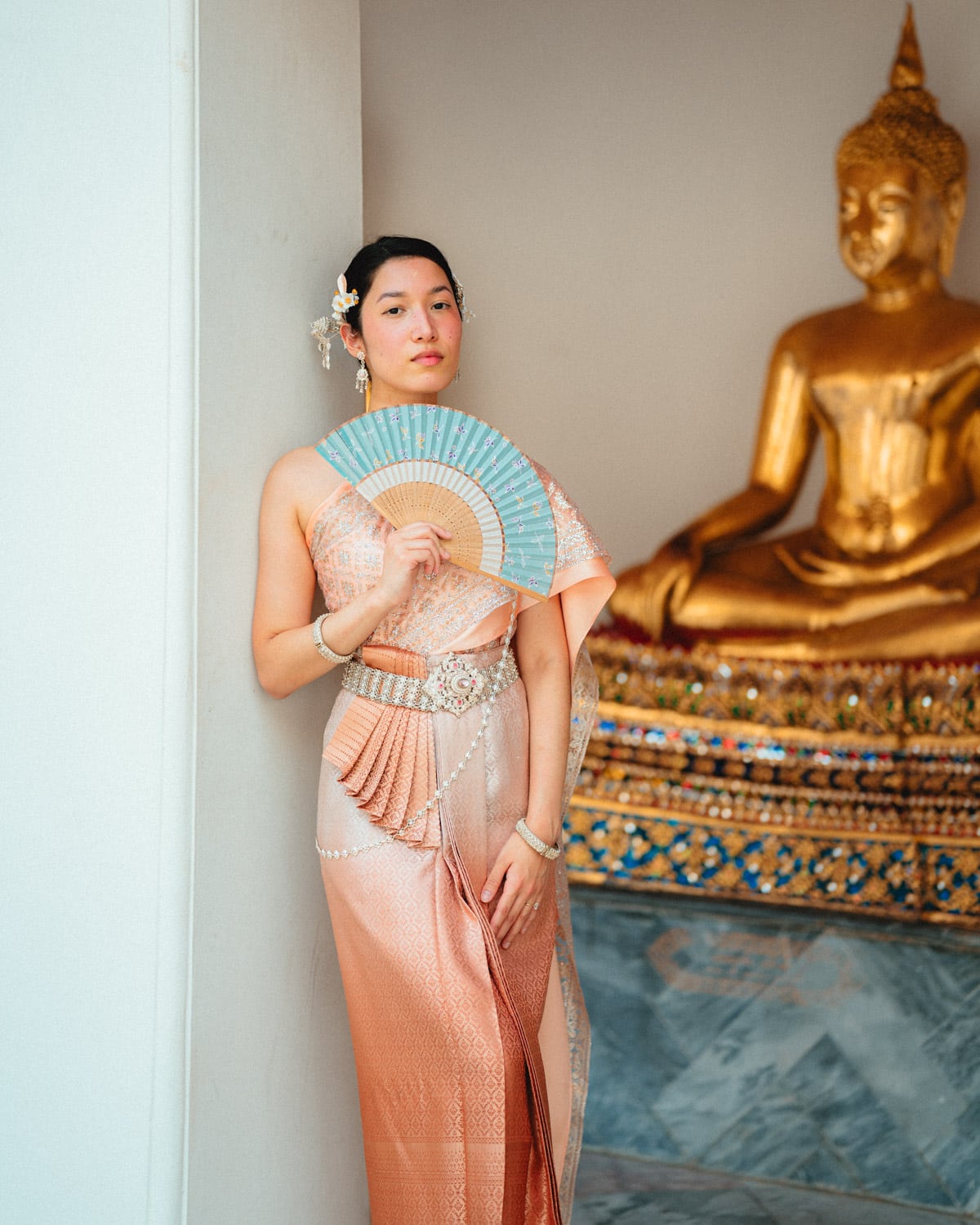Thai traditional attire is a window into the country’s rich history and culture. Beyond their undeniable beauty, these garments served as markers of identity, community, and, importantly, social status. In historical Thailand, clothing was more than mere fabric; it was an unspoken language that conveyed a person’s rank, wealth, and role within society. The intricate details and craftsmanship of traditional Thai outfits reveal fascinating insights into the societal structures of the past.
Clothing and Social Hierarchy in Ancient Siam
In ancient Siam, the social hierarchy was deeply embedded in daily life. This was particularly evident in the clothing worn by individuals from different social classes. Royalty and nobles were adorned in garments crafted from the finest silks, richly embroidered with gold threads and adorned with gemstones. These materials were not just a display of wealth but also symbols of divine authority. The elaborate designs often included motifs inspired by nature, mythology, and Buddhist iconography, each element meticulously chosen to signify power and prestige.
For members of the royal court, clothing was a powerful statement. Kings and queens often wore layers of richly dyed fabrics, and their ceremonial attire was further embellished with intricate beadwork and gold accessories. These garments did not merely convey wealth but also reinforced the divine right to rule, as many believed that the beauty and complexity of their attire were reflections of celestial favor.
Everyday Attire of Commoners
The commoners, on the other hand, wore simpler attire made from cotton or less luxurious fabrics. These garments were practical, designed to suit their labor-intensive lifestyles. While the designs were less ornate, they still showcased traditional weaving techniques and regional patterns that reflected the wearer’s community and heritage. The absence of embellishments such as gold or jewels marked the distinction between the elite and the working class.
Farmers and artisans often wore clothing suited to their professions, such as shorter skirts or tunics for ease of movement. These garments were typically dyed in natural tones derived from local plants and bark, showcasing resourcefulness and a connection to the land. Even in their simplicity, these garments carried subtle details that hinted at regional identities.
Women’s Fashion as a Status Symbol
Women’s clothing, too, spoke volumes about their status. Ladies of the royal court wore intricate blouses paired with skirts known as sinh, made from brocade and adorned with intricate patterns. Accessories played a significant role; high-ranking women often wore golden belts, necklaces, and earrings. In contrast, women from rural communities dressed in plainer versions of the sinh, often dyed with natural colors and decorated with simple motifs. These garments prioritized functionality, reflecting the demands of agricultural work and household duties.
Interestingly, court ladies’ attire often included headdresses adorned with flowers, pearls, and gold pins. These headdresses symbolized not only beauty but also the wearer’s connection to the royal family. They were frequently updated to reflect the latest trends in design, showing how fashion in the royal court influenced broader societal aesthetics.
The Role of Color in Status
Color was another defining element of Thai attire, tied closely to status and occasion. Certain hues were reserved for the monarchy and high-ranking officials. For example, gold and deep red were considered regal colors, symbolizing power and prosperity. Commoners rarely wore these shades, opting instead for muted tones that were easier to produce and maintain. The choice of color also extended to ceremonial purposes, with specific shades chosen for religious events, weddings, or royal ceremonies.
Monks, for instance, wore saffron robes as a sign of their devotion and renunciation of worldly desires. These simple yet striking robes became a visual reminder of Buddhist principles, contrasting sharply with the ornate attire of the elite.
The Pha Biang: A Shawl with Meaning
The pha biang, a shawl-like garment, further illustrated the divide between social classes. Nobles draped their pha biang in luxurious silk, often embroidered or woven with elaborate patterns, while commoners used plain cotton versions. The manner in which the pha biang was worn also varied; members of the elite wore it with a regal elegance that complemented their overall ensemble, while villagers used it more practically, often as a multipurpose cloth.
During religious ceremonies, the pha biang often took on symbolic significance, with specific colors and patterns reserved for offerings or rituals. The garment’s versatility made it a staple of Thai attire, transcending class while still reflecting individuality.
Jewelry as an Indicator of Wealth
Jewelry served as another critical indicator of social rank. Gold and gemstone-encrusted ornaments were exclusive to the royal family and high-ranking officials. These pieces were not merely decorative but also carried symbolic meanings. For instance, certain designs were believed to offer protection or bring good fortune. Common people, however, wore simpler ornaments made from silver, brass, or even wood, emphasizing utility over opulence.
Ornaments such as amulets also played a significant cultural role. These pieces, often inscribed with sacred symbols, were worn by people across all classes as talismans for protection or luck. The materials and intricacy of these amulets, however, varied widely between the elite and the common folk.
Clothing for Festivals and Ceremonies
Another fascinating aspect of historical Thai clothing is its adaptability to changing social contexts. During significant festivals or royal ceremonies, even the lower classes had opportunities to showcase their finest attire. These occasions often blurred the lines of class distinctions, albeit temporarily, as communities came together in shared celebration.
Festivals such as Songkran, Thailand’s traditional New Year, provided a stage for showcasing vibrant attire. Families often invested in new clothes for the occasion, with patterns and colors reflecting the joyous atmosphere. Similarly, weddings and other life milestones saw families pooling resources to ensure the bride and groom could wear their finest garments, reinforcing communal bonds.
Religion and Its Influence on Attire
The influence of religion also played a significant role in the evolution of Thai costumes. Buddhist principles of modesty and simplicity were reflected in traditional attire, particularly for the general populace. Monks, for instance, wore plain robes dyed in earthy tones, a stark contrast to the opulent garments of the elite. These robes symbolized renunciation and devotion, further emphasizing the moral and spiritual values embedded in Thai society.
Elite families, while embracing opulence, still adhered to religious customs during important ceremonies. Temple visits, for example, required clothing that reflected respect and modesty, blending religious devotion with cultural pride.
Regional Diversity in Thai Costumes
Despite these clear markers of status, Thai traditional clothing also fostered a sense of unity. Regional variations in patterns and styles showcased the country’s diverse cultural heritage while maintaining a shared aesthetic that tied all Thais together. This balance between individuality and collective identity is a hallmark of Thailand’s cultural fabric.
Northern Thailand, for example, featured darker hues and geometric patterns in their textiles, influenced by cooler climates and local traditions. In contrast, southern Thai clothing often embraced lighter fabrics and floral designs, reflecting the region’s coastal environment.
Modern Appreciation of Historical Thai Attire
Today, traditional Thai outfits continue to hold cultural and symbolic significance, often worn during festivals, weddings, and religious ceremonies. Modern adaptations have made these garments accessible to a wider audience, allowing people from all walks of life to appreciate and participate in this rich cultural heritage. For visitors to Thailand, renting traditional attire is an excellent way to experience this history firsthand.
Experience Thai Heritage with Siam Crown
At Siam Crown, we honor this legacy by offering a wide range of authentic Thai clothing for rent. Whether you’re looking to participate in a festival, attend a wedding, or simply explore Thailand’s cultural roots, our collection includes options for every occasion and preference. Visit Siam Crown to experience the elegance and historical richness of Thai costume rental. Let the garments tell their stories, just as they did in historical times.



